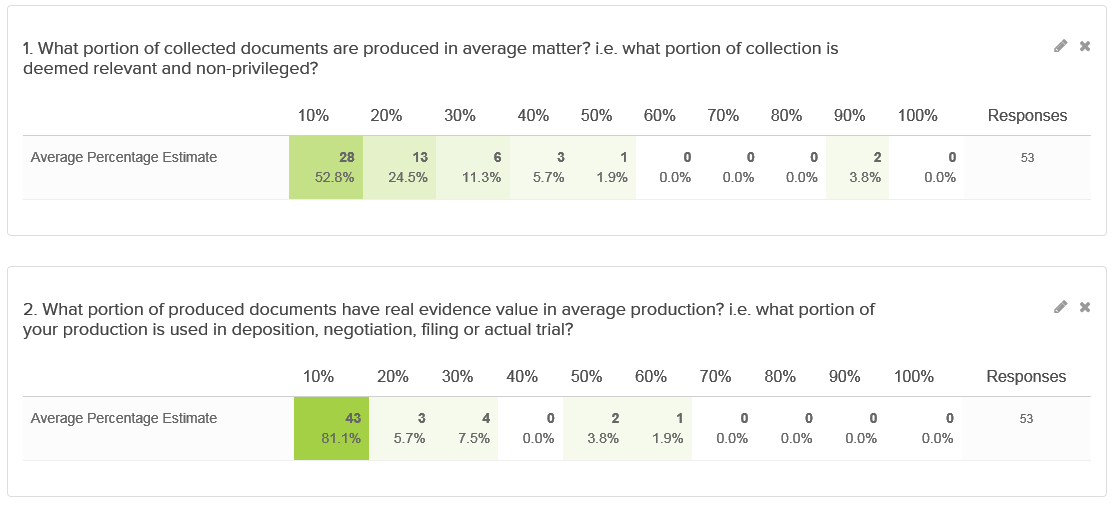Migrated from eDJGroupInc.com. Author: Greg Buckles. Published: 2015-01-18 19:00:00Format, images and links may no longer function correctly.
When the bench has had enough discovery bickering from the parties, it can ‘divide the baby’ and impose it’s own discovery plan. In the case of Armstrong Pump, Inc. v. Hartman, No. 10-CV-446S, 2014 WL 6908867 (W.D.N.Y. Dec. 9, 2014), the court appears to have lost patience with both parties and decided that a set of 13 search terms run on ALL of the Plaintiff’s corporate ESI will retrieve actual responsive content. I have served as an expert and defense strategist in too many cases to pretend that anyone outside of the matter can actually determine whether these terms will be effective. So my perspective on the case should be taken as a more general commentary than a professional, informed opinion on this specific case. The K&L summary is a fast read and has a couple interesting points.
- The bench selected the search terms, seemingly based on common phrases from the various filings instead of an actual review of samples or productions. This reminds me of how my corporate clients frequently receive ‘legal hold terms’ created by law firm associates from the demand or complaint. The one truth that I found in the oft-quoted 1985 Blair and Maron study is that even the brightest lawyers cannot create effective search terms without real workflow and tools in contact with actual data. Translation: search terms without actual search metrics are useless.
- “For a period starting from January 1, 2004 through the present time, Armstrong must search ALL corporate documents, files, communications, and recordings for EACH of the above phrases. Armstrong will maintain a list of every server, computer, file room, or other place searched, and a list of all positive search results. For each positive result, Armstrong will procure a full copy of the document in question. Armstrong also will furnish a complete and sworn description of its document retention policies, if any, from January 1, 2004 through the present time.” One hopes that the Plaintiff’s already have a complete and accurate corporate data map and a plan for searching every data asset. I foresee enormous discovery provider bills OR some serious uphill work for their discovery expert to make common sense inaccessibility or duplication arguments.
- “When the search is complete, a representative of Armstrong and all of Armstrong’s counsel of record will file a sworn statement confirming that Armstrong made a good-faith effort to identify sources of documents; that a complete search of those sources for each of the above phrases occurred; and that the search results have been furnished to Optimum. All of this must occur on or before April 1, 2015, with absolutely no exceptions or extensions. Failure to comply will lead to sanctions under Rule 37(b)(2)(A).” Oh boy. I have been that ‘representative’ signing off on compliance efforts to a frustrated court, agency or auditor after someone dropped the ball and lost confidence in the ‘good-faith efforts’ of the corporate team. With less than four months to comply, this qualifies as a rush job with serious consequences for sloppy work.
This kind of eDiscovery fire drill is neither efficient nor efficacious. Relevant emails and documents that do not contain this limited search criteria will be left behind. Will they be the key, critical exhibits that either party could have used to support their points? Maybe, maybe not. The vast majority of respondents to the recent eDJ poll on Evidence vs. Collections indicated that less than 10% of collections was actually relevant and less that 10% of Productions had actual evidentiary value. By my calculations, less than 1% of collections are actually used by counsel as exhibits. When you take into account the fact that most collections already focus on the key custodians and data sources, it raises real questions as to the value of enterprise wide ‘corporate cavity searches’ as anything more than punitive exercises to assuage understandable judicial frustration. So do the right thing and get your eDiscovery ducks in order before your next adversarial meet and confer.
Greg Buckles can be reached at Greg@eDJGroupInc.com for offline comment, questions or consulting. His active research topics include analytics, mobile device discovery, the discovery impact of the cloud, Microsoft’s 2013 eDiscovery Center and multi-matter discovery. Recent consulting engagements include managing preservation during enterprise migrations, legacy tape eliminations, retention enablement and many more. Blog market perspectives are personal opinions and should not be interpreted as a professional judgment.

